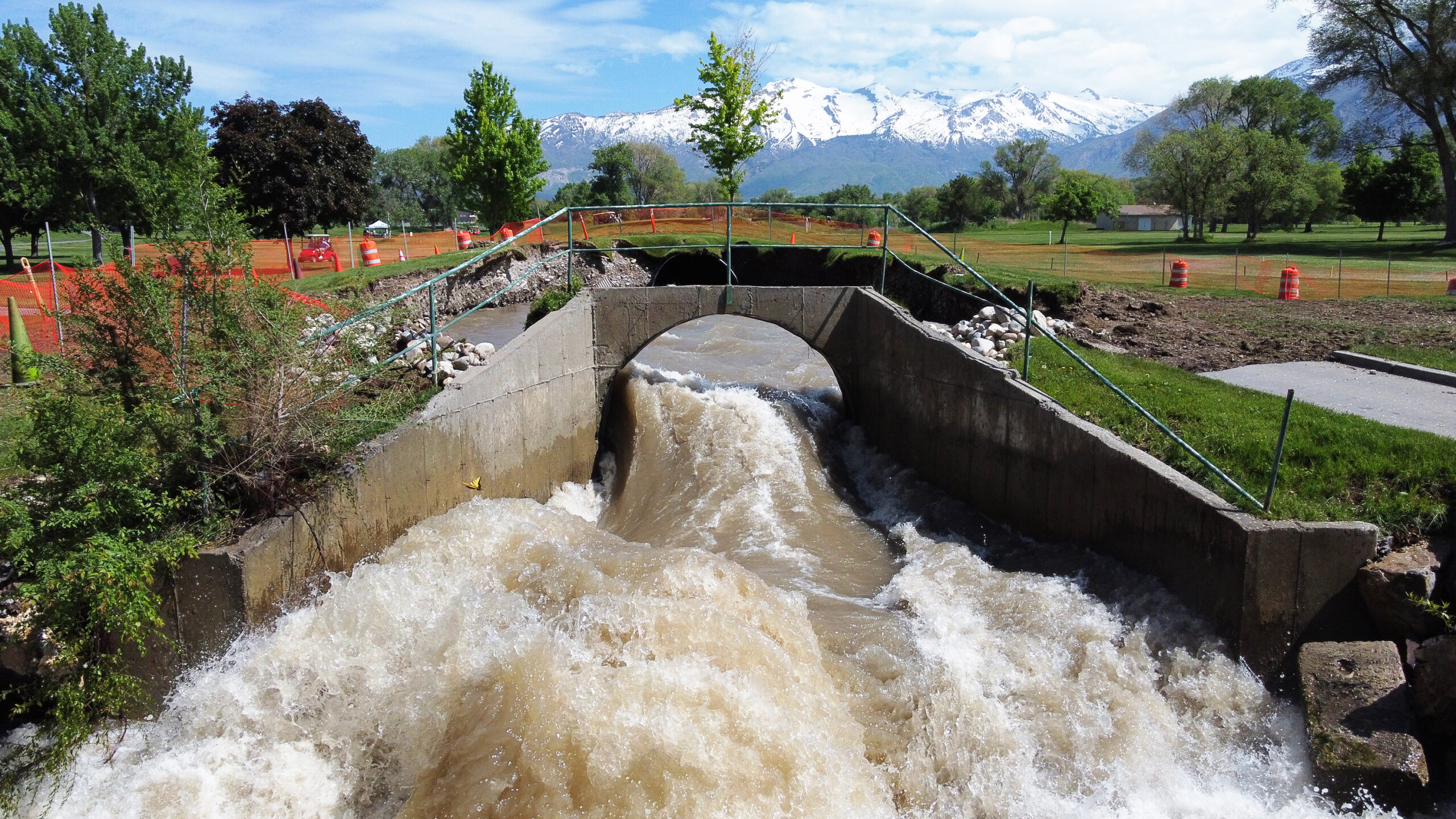Record Utah winter makes up for years-long water shortfall
May 30, 2023, 12:20 PM | Updated: 6:26 pm

Spring runoff continues to erodeda section of Fox Hollow Golf Club in American Fork on Tuesday, May 23, 2023. (Scott G Winterton, Deseret News)
(Scott G Winterton, Deseret News)
SALT LAKE CITY— Going into this past winter Utah was in what officials called an exceptional drought, registering nearly 14 inches below the amount of water needed for a healthy statewide supply.
Fast-forward a few months beyond a record-breaking winter and that deficit is gone.
Related: Storm approaching Utah will add significantly to strong Utah snowpack
KSL Meteorologist Kevin Eubank said snowpack from the 2022-2023 winter season holds, on average, 30 inches of water. That’s 30 inches of water helping to make up the shortfall that built up over the past three years.
“This has been an incredible turnaround … you could not have scripted a more dramatic flip,” Eubank said.
Goodbye Utah drought stage, hello water conservation
All the water helped much of the state exit the drought stage. According to the U.S. Drought Monitor only a portion of central Utah is still in moderate drought.
While Eubank said the shortfall is mathematically eliminated, that doesn’t mean we’re out of the woods in terms of our long-term needs as a state.
“We have to change our mentality…to be a water conserving state, a water wise state and good stewards of the resources,” Eubank said.
Related: Utah sets heat record for hottest summer
Eubank said medium and smaller reservoirs will fill from this year’s record snowpack. But larger water bodes like Bear Lake and Strawberry Reservoir likely won’t fill in just one year.
And of course, the Great Salt Lake and Lake Powell are going to need more than one year to get back to healthy levels.
Eubank said this year was the starting point in what will eventually be a multi-year recovery from the drought. And while there is no longer a water deficit to make up next winter, there is still work to do in the years to come.
“While we can’t control what falls from the sky, we absolutely can control what we do with what does fall,” Eubank said about Utah water. “I hope that’s what we’ve learned out of the last several years.”












